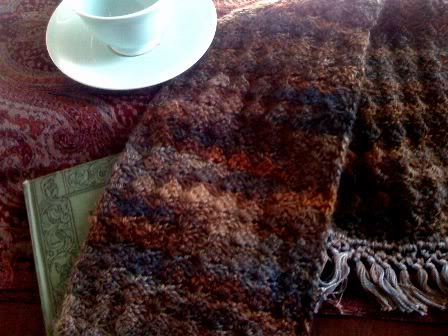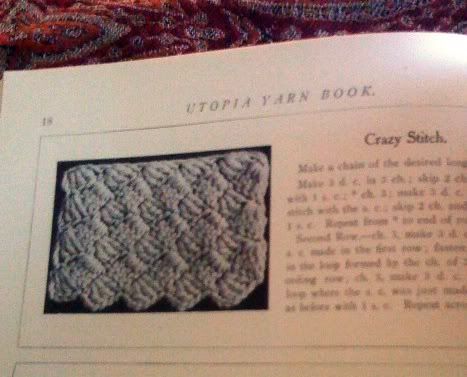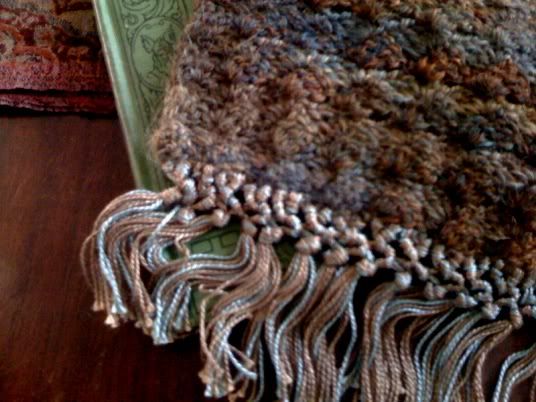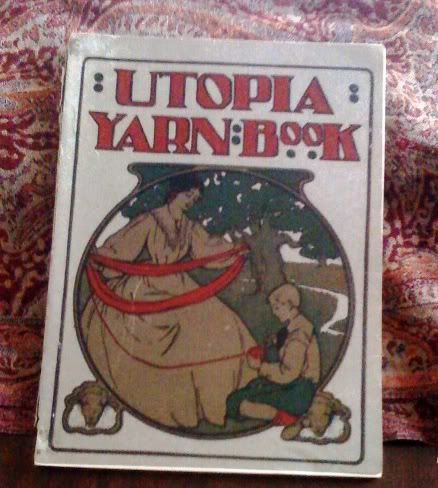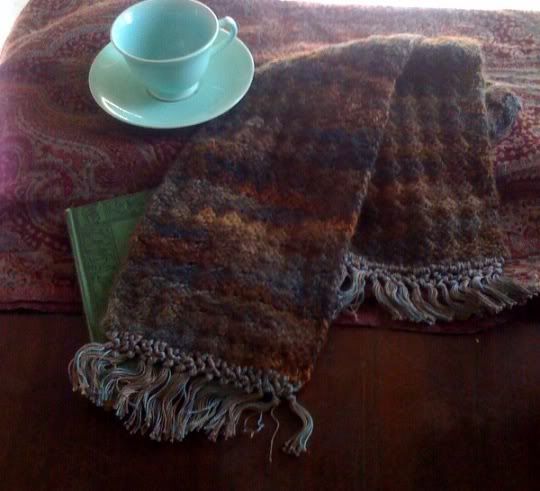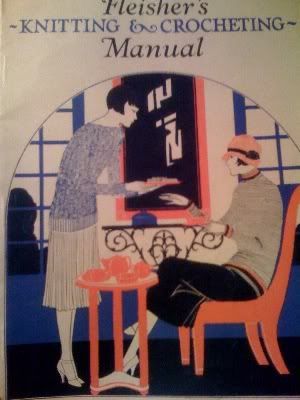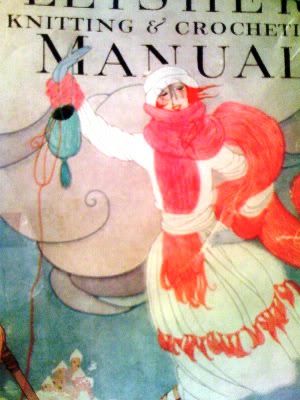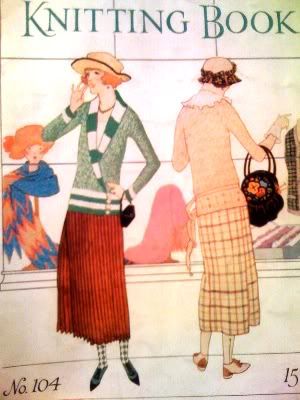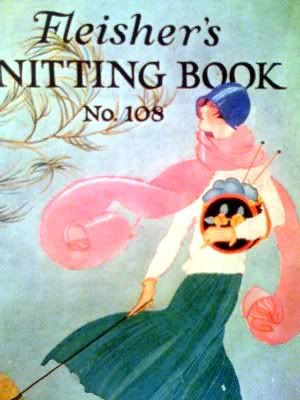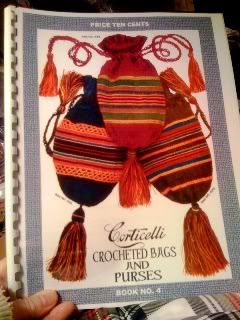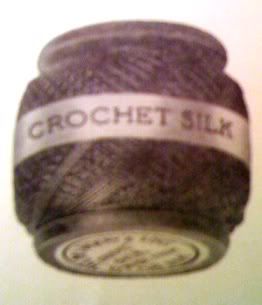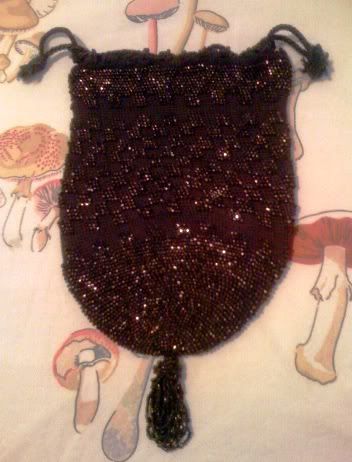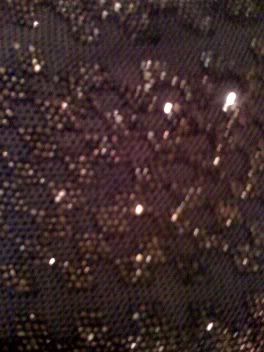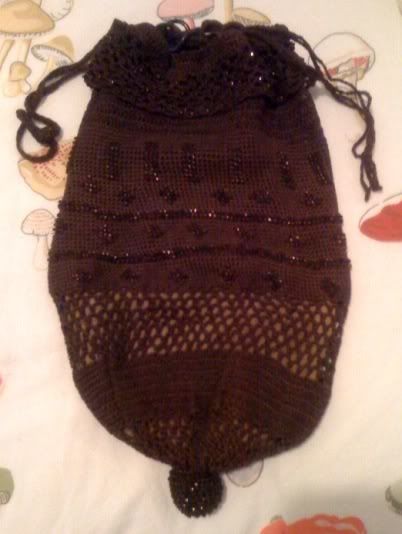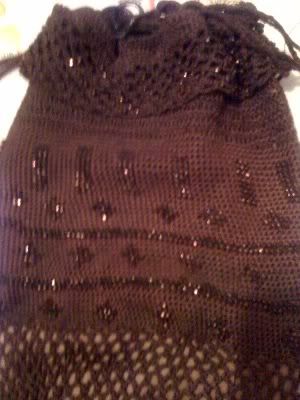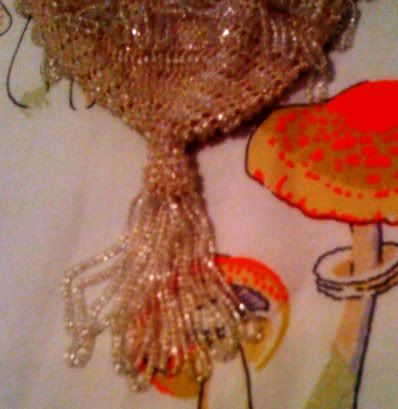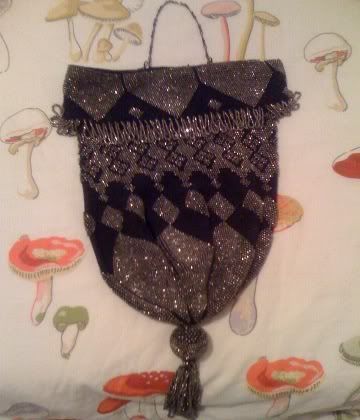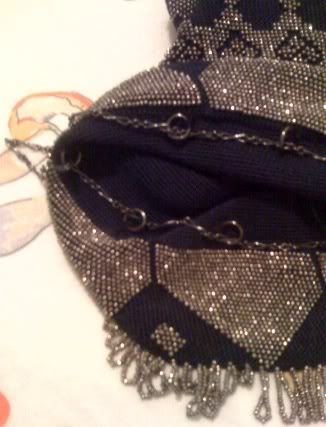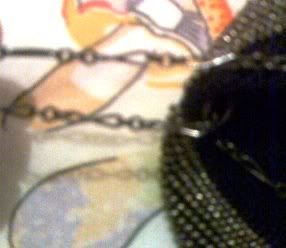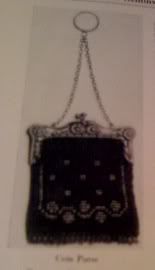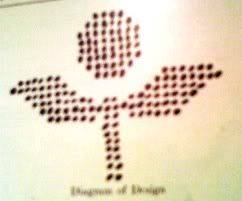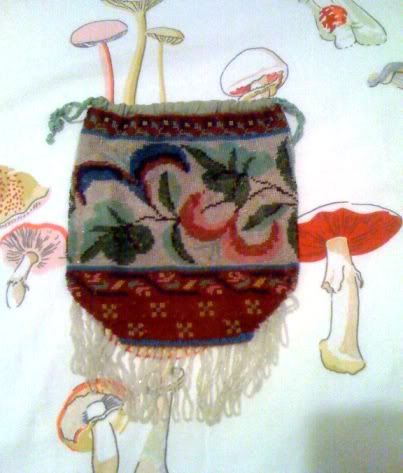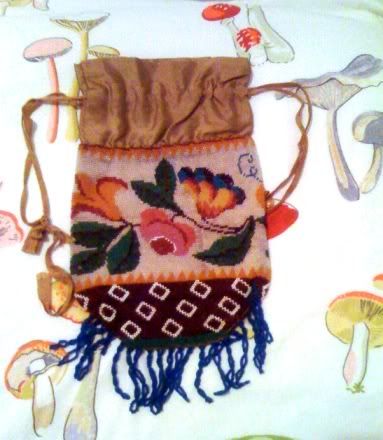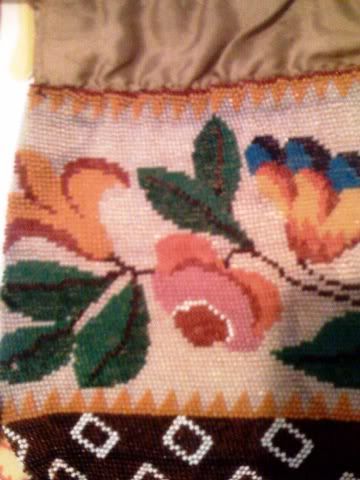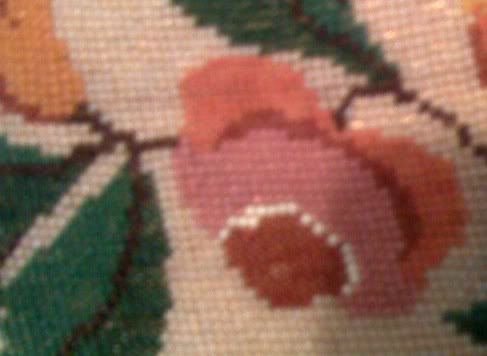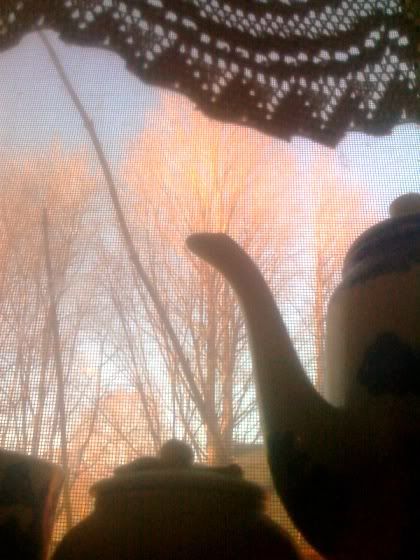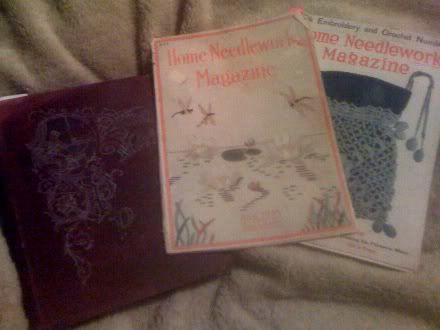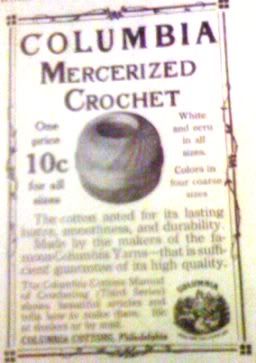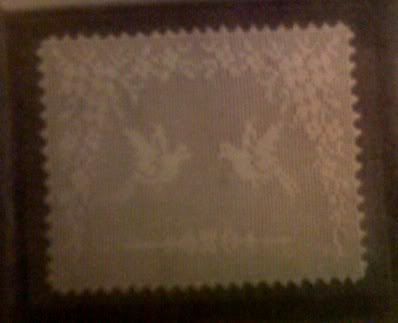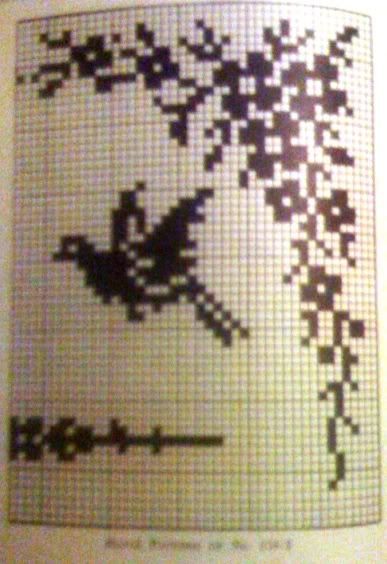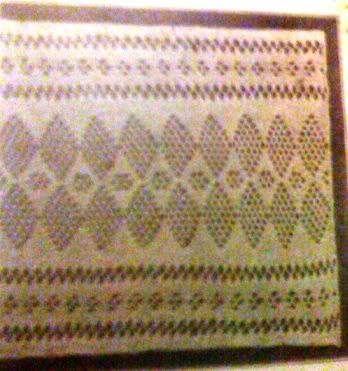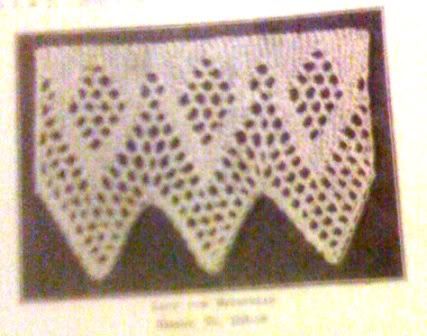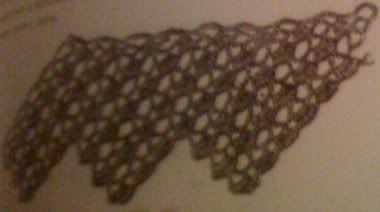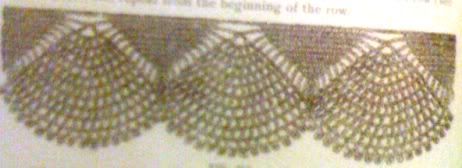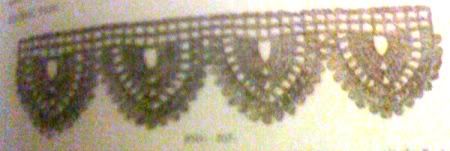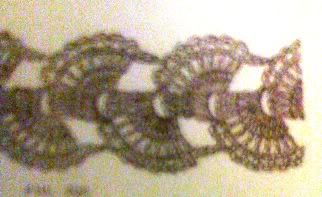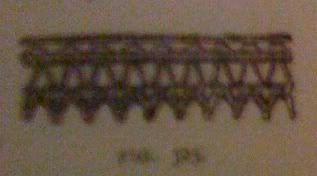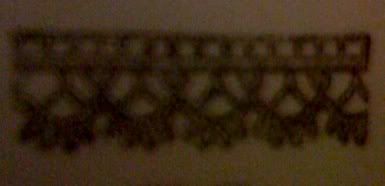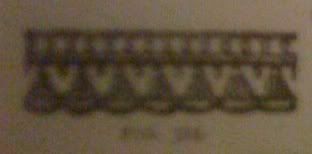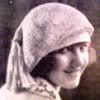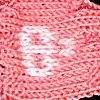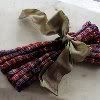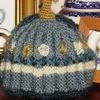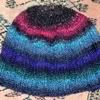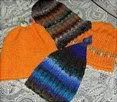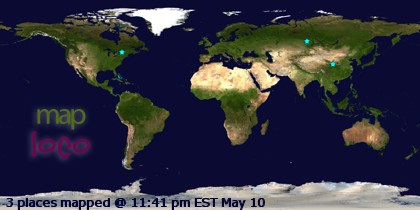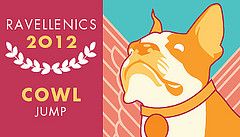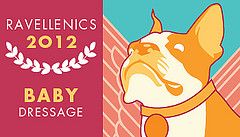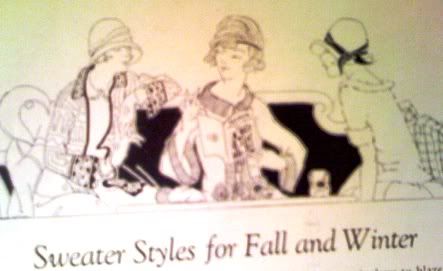
In my last post, I said I'd have a surprise for you at the end, but then I ran out time and this particular surprise takes a lot of time to type out! I had been planning to pour through my old pattern books and find one of the beaded bag patterns for you but then, as I looked at book after book, I found this in a pattern for a stylish sweater:
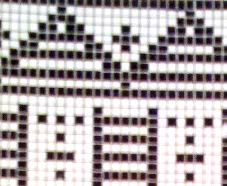
and it reminded me so much of this in style:

I took a closer look and both the sweater design and the bag were made within just a couple years of each other so... yeah... these were inspired by the Art Deco era that started in Paris in the 1920's.
This pattern, The Spencyr Sweater, comes from 1923 Fleisher's Knitting and Crochet Manual, Number 106.
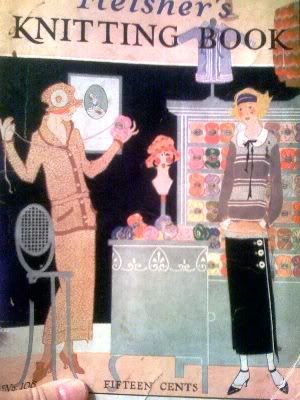
I have the complete series of these manuals, in the original, starting with 1890 and going through 1939, as well as several from the 1940's. It took me about 10 years to collect them! Each one is a complete gem. You can find many of these manuals, in reproduced form, through IvaRose.com. So here it is!
The Spencyr Sweater~ S.B. and B.W. Fleisher, inc. Philadelphia.
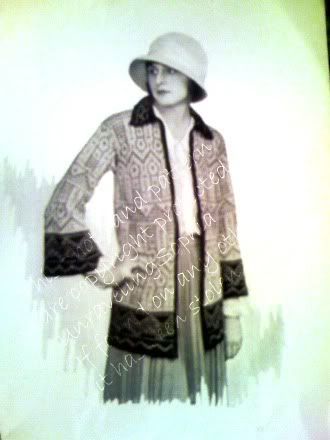
Materials ~ Fleisher's Silverglow Yarn - 5 balls White, 5 balls Henna, 2 balls Black. Needles, 1 pair No. 5 (US). Gauge: 6 stitches and 6 rows = 1 inch square.
[
Silverglow was a fingeringweight yarn on the thicker side, like Blue Moon Fiber Arts STR heavyweight]
No size for the finished sweater is given, but in other of their manuals they state that the patterns are sized 36 and to size up or down by changing the needle size and yarn weight.
With black yarn cast on 96 inches, Work in stockinette stitch for 1 1/2 inches. Purl 1 row on the knit side to form a hem line and continue in stockinette for 5 rows. Join Henna and start pattern following chart no. 1.
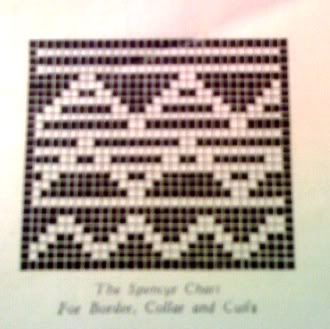
1st row: 1 st henna, *6 stitches black, 2 stitches henna*. repeat between *'s ending with 1 st henna.
Change to chart for body of sweater. On first row of all white increase to 99 stitches by increasing in the 2nd stitch from each end and also in the center of the row.
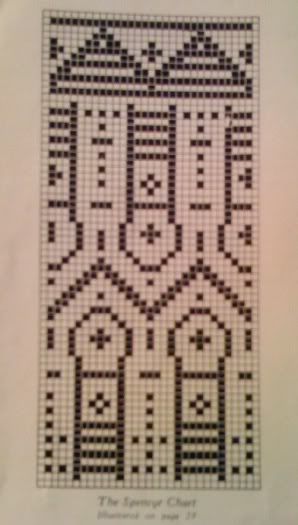
Follow chart for the 66 rows and repeat pattern from the 1st white row.
When back measures 21 inches from hem line (20 inches from 1st row of 1st pattern) bind off 5 stitches each side and decrease 1 stitch each side every 2nd row 3 times.
Work even for 5 1/2 inches. This should be the last row of 2nd full pattern. With white yarn work 31 stitches, place on a stitch holder, bind off 21 stitches. On remaining 31 stitches start front, reversing pattern from last row on back.
Work even for 1 inch, then increase at neck edge 1 stitch every other row 3 times and cast on 5 stitches.
Work even on both edges until armhole measures 5 1/2 inches from shoulder, then increase 1 stitch on armhole every 2nd row 3 times and cast on 5 stitches. Finish front same as back to border. Increase 1 stitch at underarm on 1sr row of border and follow chart.
With black, work 5 rows of stockinette, purl 1 row on the knit side and continue in stockinette for 1 1/2 inches. Bind off on wrong side. Make other side to correspond.
Sleeves:
With white pick up 71 stitches around armhole. Reverse pattern of sweater from 28th row of 2nd pattern. When work measures 10 inches increase 1 stitch each side every 2nd row 3 times. Reverse to 23rd row of pattern; this should measure 12 inches; then work border to match border on bottom. Work other sleeve to correspond. Sew up seams and hem bottom.
Band on Front:
With black pick up all the stitches from neck to bottom of sweater. Work stockinette stitch for 3 rows, purl 1 row on knit side, and continue in stockinette for 1 inch. Bind off on wrong side. Make other fromnt band to correspond. Turn both bands on knit line and hem.
Collar:
With black, holding wrong side of sweater toward you, pick up 70 stitches around neck. Work in stockinette for 1 inch. On knit row, knit 25, *knit 2 together, knit 7*, repeat between *'s once, knit 2 together, knit 25. Purl 1 row. Next knit row knit 24, knit 2 tog, knit 6, knit 3 tog, knit 6, knit 2 tog, knit 24.
Join henna. *knit 5, increase 1 stitch in 6th stitch* repeat between *'s twice, knit 27, *increase in next stitch, knit 5* repeat between *'s twice. Work 1 row black as follows: purl 2, increase in next stitch, purl 31, increase in next stitch, purl 31, increase in 3rd stitch from end, purl 2. Join henna. Beginning with 1st row of border chart work 7 rows. After last row of henna, with black work 3 rows of stocinette, purl 1 row on the right side for hem line and 1 1/2 inches of stockinette as before. Bind off on wrong side.
On front edges of collar, holding right side toward you, pick up and knit 16 stitches. Work in stockinette for 3 rows, decreasing at neck end every row. Work 1 purl row on knit side, and stockinette for 1 inch. Bind off on wrong side. Sew hem on collar and hems on edge over the deep hem.
One last note,,,, doesn't the model in the sweater look so like Edith Granville from
Downton Abbey?! And this is just the type of sweater that she would wear.
